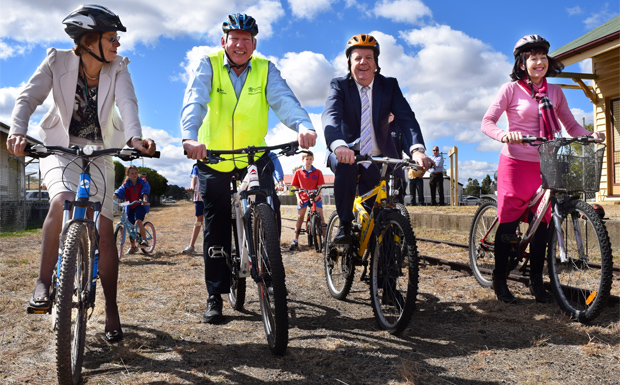
August 19, 2014
A report that Somerset Regional Council fears they will face a six-figure annual maintenance bill for a rail trail in their region has surprised South Burnett Mayor Wayne Kratzmann.
Mayor Kratzmann said today he expects the annual maintenance bill for the South Burnett’s rail trails is likely to be around $30,000.
This covers the Council’s portions of the Blackbutt-Linville Rail Trail and a planned new rail trail between Kingaroy and Kilkivan.
Somerset Regional Council is being pressed by community groups to complete a “missing” 27km stretch of the rail corridor between Moore and Toogoolawah but Somerset Mayor Graeme Lehmann is unenthusiastic about the idea.
His region already has a 71.6km rail trail stretching along the Brisbane Valley from Wanora (near Fernvale) to Toogoolawah.
Mayor Lehmann told media this week he was concerned that future maintenance could become a burden on ratepayers, and would like more details about the State Government’s expectations of councils and future maintenance funding arrangements.
Mayor Kratzmann told southburnett.com.au today his Council’s approach to rail trail maintenance would be to set aside a portion of the $2 million that it will share with Gympie Regional Council for the Kingaroy-Kilkivan rail trail to fund future maintenance.
The Council may also look at alternative funding models, such as public donations towards the trail’s upkeep – an approach that has worked successfully elsewhere in Australia.
Member for Nanango Deb Frecklington has said previously that she has spoken to Deputy Premier Jeff Seeney regarding funding for the Somerset section.
Related articles









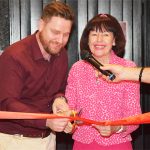




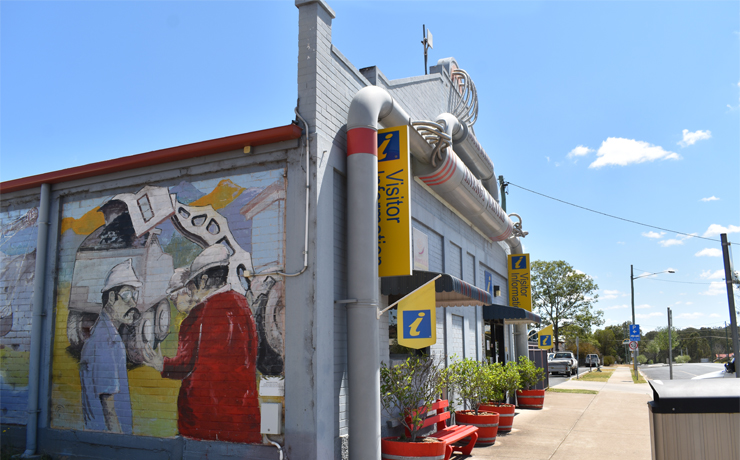






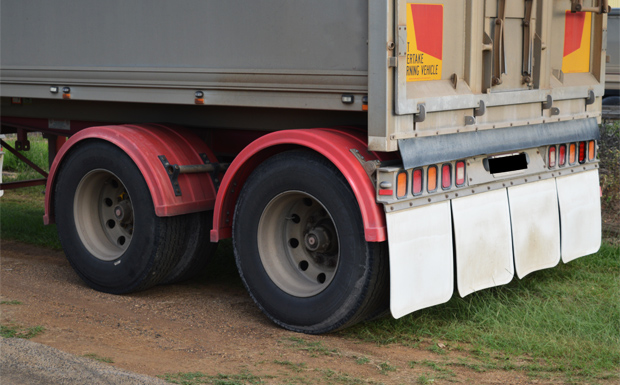

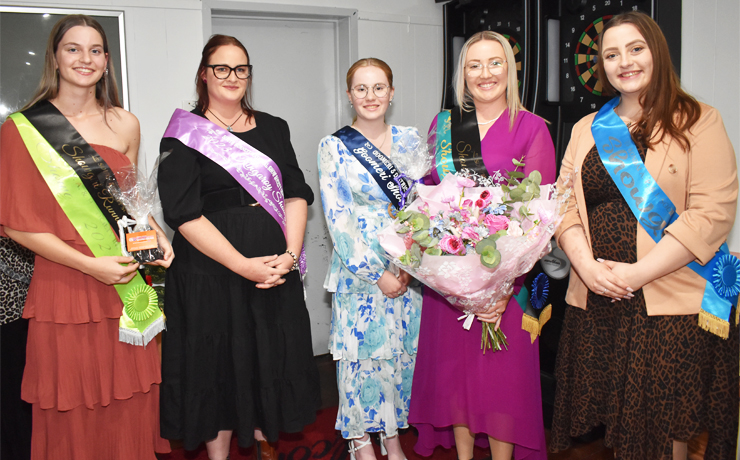
Nobody has mentioned the benefits of having a rail trail in the region? The economic benefits as well as the health benefits. Earlier this year (or maybe last year) an article in the “Waikato Times” in NZ suggested that the one-year-old “Hauraki Railtrail” was generating $1.8 million per month to the local economy and that 41,000 people cycled that trail. I know that’s a staggering amount of money; but what can I say? They love rail trails in New Zealand and people travel the world to cycle their rail trails.
G’day! Has anybody out there, ever heard of a Rail Trail being closed down, abandoned ?
Don’t think so. They continue to thrive and the obvious benefits keep on keeping on.
Rail Trail this summer, and it is estimated users are generating at least $1.8 million a month for the trail’s local economies. As promoted in this article one can only ask why the need for public funding?
Mayor Lehmann told media this week he was concerned that future maintenance could become a burden on ratepayers. Rightly so ratepayers should be concerned at the costs associated with rail trails and tourism adventures in general. Private investors have every opportunity to under take these projects but do not. The reason being they are not commercially variable. Mayor Kratzmann said today he expects the annual maintenance bill for the South Burnett’s rail trails is likely to be around $30,000. Supporters and business advocates of these adventures also are unwilling to invest their own money thus burdening tax and ratepayers with this indulgent use of public funding.
Jack, what part of “this is State Government land” don’t you understand? You’ve talked before about how you think tourist operators should be paying for the rail trail, and it was pointed out to you they couldn’t. Why? Because the land is owned by the Queensland Government. And now the Government is giving this former railway land to Queensland councils – along with the money they need to develop them into rail trails to grow tourism and jobs in regional Queensland. And why do that? Because this same strategy has already worked well interstate and (as Kate points out) in New Zealand.
Federal and State Governments usually waste money backing unproven “pie in the sky” ideas. So it’s refreshing to see our State Government actually backing something that has every chance of working, and I hope they keep it up. I don’t know if the Kingaroy-Kilkivan Rail Trail will generate the $1.8 million a month the Hauraki Rail Trail brings in, but anything’s better than the zero dollars this unused land brings in right now.
Federal and State Governments usually waste money backing unproven “pie in the sky” ideas – this we can agree on. The interests of tax and rate payers are not served when vested interests pursue projects that do not return value on investments to the payee, in this case tax and rate payers. Funding for these projects is entirely dependent on public subsidization to build, maintain and service these non-profit adventures. The business community’s enthusiastic endorsement of these projects, but business’s finical enthusiasm for investment in these projects speaks for itself. As with the road levy and Memerambi development, by redefining these projects designation to a benefited project, fees and charges then can be directly applied to benefactors and users thus achieving autonomy in financial operation devoid of public assistance. I now refer to the Treasurer’s statement “the age of entitlements are over”.
G’day Jack, why don’t you consider gathering a few friends together to give the Rail Trail a go? Warning! You will run the risk of enjoying the experience. Yarraman-Moore, 44 km; or Toogoolawah-Wanora, 70 km.
P.K I am quite aware of their location and have traversed these trails long before fashion dictated vast sums of public funding be wastefully allocated to them. Private stakeholders business, equestrian, cycling and walking clubs have every opportunity to undertake all necessary steps to render these trails operational. Tourism activists always proclaim economic bonanzas but when challenged to fund these operations financial reality quickly reveals this to be propaganda. If public subsidization of tourism was made voluntary on our tax and rate bills, would tourism as we know it survive? Perhaps councils could incorporate this suggestion into rates notices – an interesting experiment in public support for tourism.
First and foremost, rail trails are a safe venue for outdoor recreational use. Hiking, cycling and horse riding. These disused rail lines just need to be opened up for people to use for exercise and to improve their health, body and soul. Tourism is the bonus.
PK – The South Burnett contains numerous sporting facilities to cater for the health and well being of residents offering many outdoor recreational activities. It would be most suprising if a capable horseman / woman, hiker or bike rider would be incapable of traversing these trails in their present condition.